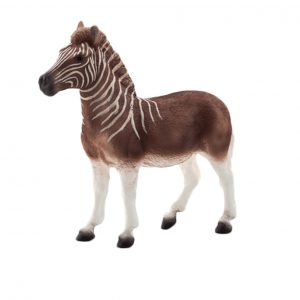And Darwin Mentions the Remarkable Quagga
Darwin uses the Quagga to help explain the Laws of Variation
It is interesting to note whilst re-reading the Origin of Species, that Darwin uses the example of several genera of horses to demonstrate reversion in natural selection with striped markings appearing in the offspring of many separate species from the family Equus (horses).
Darwin Illustrates the Laws of Variation
When Darwin’s ground-breaking book the Origin of Species, or to give its full title “The Origin of Species by means of Natural Selection or The Preservation of Favoured Races in the Struggle for Life”, was first published the year was 1859. The science of genetics did not exist and there was no known scientific mechanism for passing on inheritance. In chapter 5, Darwin sets out his thoughts on the laws of variation in nature. He uses Equus (horses) to illustrate how species of the same genus can vary in an analogous manner. Analogy in this instance is describing the resemblance of structures which depends upon similarity of function, as in the wings of insects and birds. Such structures are said to be analogous, and to be analogues of each other.
The Quagga
One of the animals used to illustrate the points made by Darwin in this chapter is the South African Quagga. At the time Darwin wrote this book, the Quagga was still around but within a few years this particular striped horse had been hunted to extinction.
An Illustration of a Quagga (Mojo Quagga Model)
The image (above) shows a Mojo Fun Quagga replica. To view the range of animal models and figures in the Mojo Fun range: Mojo Fun Prehistoric and Extinct Models.
The Quagga had the distinctive markings of the plains Zebra on the head and neck, but the dark markings between the white bars grew darker and whiter towards the rear of the animal with the rump dark brown in colour. Sadly, this animal was hunted to extinction for meat, hides and to preserve grazing land for domesticated animals. The last Quagga in the wild was probably killed in the late 1870’s. Darwin may have viewed a Quagga as there was one at London Zoo until this animal died in 1870. The Quagga has the remarkable distinction of being one of the very few extinct animals where the date is known when they became extinct. The last Quagga, alive on Earth was kept in a Zoo in Holland. When this animal died on August 12th 1883, these animals became extinct.
Ironically, even though Darwin et al referred to the Quagga as a separate species, the DNA of hides and the very few skeletons of this animal that remain indicate that it was actually a sub-species of the highly variable plains Zebra. Attempts are being made to reproduce the Quagga by selectively breeding Zebra species.
The name Quagga was taken from a native language, it is supposed to be onomatopoeic as the sound made by pronouncing the word reflects the call made by the animal.
As these animals have become extinct in recent history, those exhibits seen in museum collections are not fossils but actual skeletons. The Quagga skeleton is believed to be the rarest mammal skeleton on the planet kept in museums, as so few of these creatures were preserved and retained in Natural History Museum collections.


